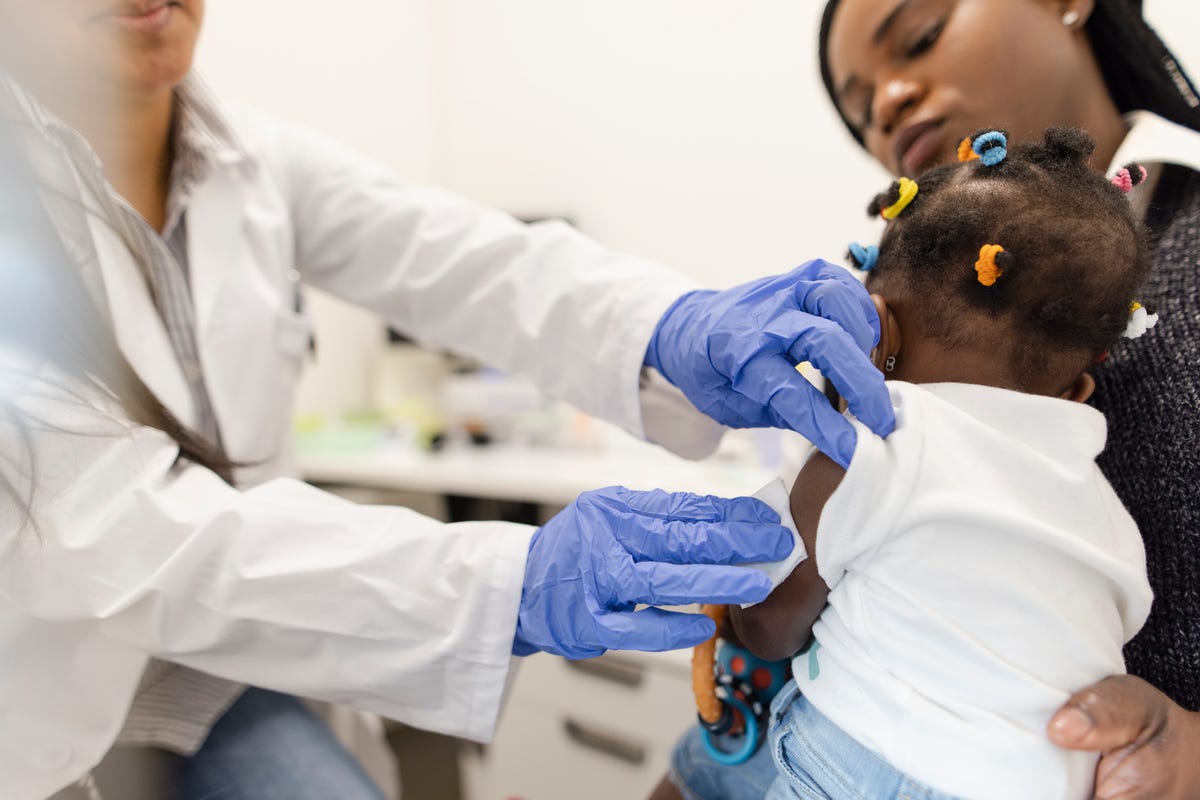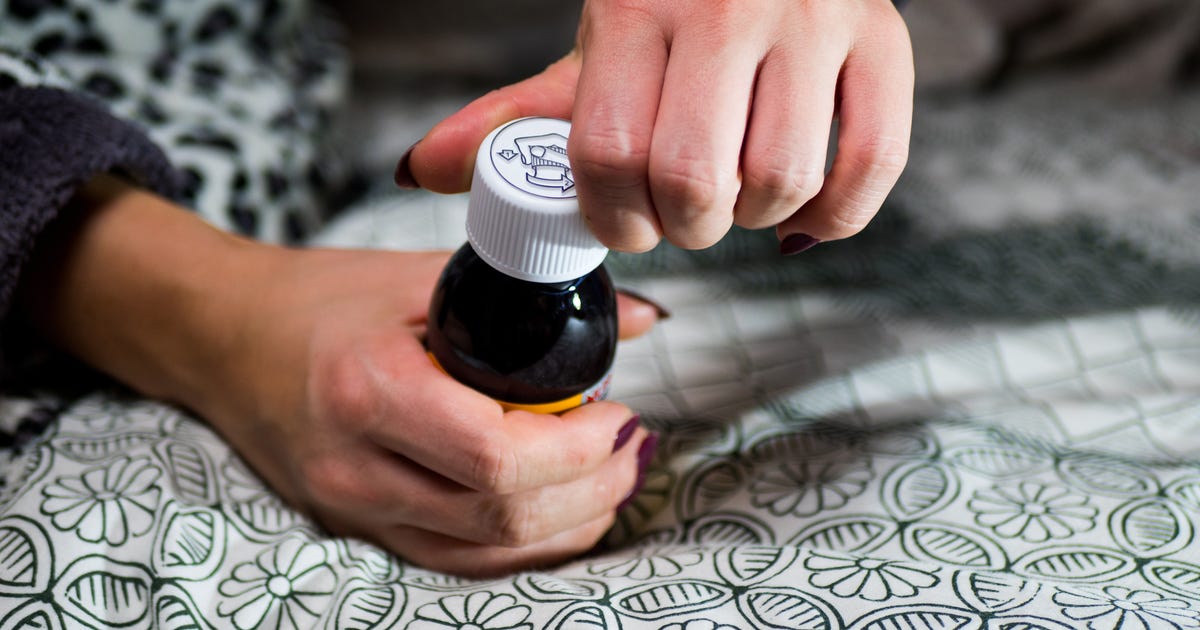What’s happening
Cases of RSV, flu and COVID-19 circulating in children have caused high demand for children’s cold and flu medication, resulting in shortages or buying limits at some pharmacies.
Why it matters
Fever, cough and congestion are symptoms of all three viruses and parents may be looking for ways to make their child more comfortable during their illness.
What it means for you
Besides pain-relieving medicine, there are other ways you can soothe a child’s symptoms. Here’s what the experts say.
Respiratory syncytial virus and the flu have joined COVID-19 and created a perfect storm of viruses this season. Children, especially, were hit hard by an early RSV season, and some parents report that their households have been sick for weeks.
In response, CVS Health and Walgreens have announced limits on how much children’s medicine people can buy over-the-counter, as demand for the medication soars amid a winter full of respiratory illnesses.
CVS has a two-item limit on children’s pain-relief products. This applies to all pharmacy locations and online, a spokesperson confirmed.
Walgreens doesn’t have an in-store buying limit, but has an online limit of six per transaction “to prevent excess purchasing behavior,” the company said.
Walmart, another pharmacy giant, has seen “higher demand for pediatric OTC pain medications this year,” but hasn’t changed its purchasing policies online or in-store, a spokesperson for Walmart told CNET.
Here’s what we know about the shortage of child medications at some stores, including which products are affected and what parents can use instead.
What is pain-relieving medication?
Pain-relieving medication, like the cold and flu medication being limited at some pharmacies, can be used to soothe symptoms of respiratory viruses in children, including fever and cough. It often contains child-size doses of acetaminophen or ibuprofen, which reduce fever. Some common brand names of these medications include Children’s Motrin (which contains ibuprofen) and Children’s Tylenol (made with acetaminophen).

Flu shots, which reduce the risk of severe influenza, are available to everyone as young as 6 months. COVID-19 vaccines are also available for babies as young as 6 months. Researchers are working on a vaccine for RSV.
Hero Images Inc/Getty Images
Why the buying limits?
High demand for cold and flu medication brought on by high rates of RSV, flu and COVID-19 — all of which have overlapping symptoms — likely is a big contributor leading to shortages at some stores or locations. CNN reported that sales of pediatric pain relievers are up 65% this year compared to last, per the Consumer Healthcare Products Association.
Along with over-the-counter medications, antivirals that require a prescription (like Tamiflu) were also in record-high demand. According to a 2022 report from SingleCare, a prescription services company, antiviral medication fills at the company grew by 92% compared to 2021. There was a 773% increase at SingleCare in prescription fills for oseltamivir phosphate (generic Tamiflu), which reflects a hard-hitting flu season this year across the US, compared to last year, when flu numbers were unseasonably low.
Alternatives to common pain-relieving medication
Because many common pain relief medications include ibuprofen or acetaminophen, it’s important to consult your pediatrician about what’s safe for your child, taking into account their age and weight. Generally speaking, children under 6 months shouldn’t take ibuprofen, and children under 3 months shouldn’t take acetaminophen, according to dosing information from the American Academy of Pediatrics. If you can’t find your preferred brand, check for the store’s generic equivalent.
And if you’re looking to give your child relief but everything seems to be out of stock, there are also natural remedies available that can soothe cold or flu symptoms. Dr. Steven Abelowitz, medical director of Coastal Kids pediatric medical group, said over email that there are many alternatives to treating fever in children.
“Lukewarm baths, lightweight clothes, keeping your child well hydrated and placing a fan nearby all work towards breaking a child’s fever when over-the-counter options are not available,” Abelowitz said.
Other methods for reducing common respiratory symptoms include applying a mentholated rub on a child’s neck and chest, which is safe for children age 2 and up, the AAP says, helping them breathe more comfortably while sleeping. Some people swear by honey for soothing a sore throat or cough, and it’s safe to give to children older than 1 year. It’s not safe for young babies because their digestive systems aren’t mature enough yet to remove bacteria. Saline nose drops and humidifiers are other means that might ease a child’s stuffy nose and congestion, per the AAP.
Abelowitz said that children can sometimes get headaches from coughing too much.
“If your child is experiencing a headache, ensure they are well hydrated and take proper steps to help soothe their throat,” which can include popsicles or honey if they’re old enough.
When to worry about a fever
Fever is a sign that our body is fighting off an illness, like a respiratory virus. In children, fevers can be common and, in most cases, are not much to worry about and will resolve as the child fights off the illness.
“A low-grade fever is defined by most experienced clinicians as between 100 to 102 degrees F, and not all low-grade temperatures need to be treated, especially if the child does not look very uncomfortable or sick,” Abelowitz said. “Most fevers don’t cause discomfort until they go above 102/103 degrees F.”
You should call your pediatrician, however, if your child is younger than 3 months old and has any degree of fever of 100.4 degrees Fahrenheit or higher, according to the American Academy of Pediatrics. And no matter your child’s age, you should call their doctor right away if they have a temperature above 104 degrees.
You should also seek help if they’re experiencing more severe symptoms, or there’s another factor at play, according to the AAP, including the following:
- Seizure
- Being unusually drowsy or super fussy
- Having a stiff neck, problems breathing, an unexplained rash, severe headache, severe ear or throat pain and repeated vomiting or diarrhea
- Having a history of heart problems or a condition that suppresses the immune system, including sickle cell disease and cancer
- You should also call if they have a fever after being in a very hot place, like an overheated car
Unsafe alternatives to child pain relievers
Aspirin is not a safe substitute for children if your go-to cold or flu medicine is out of stock. According to the AAP, it can cause complications including intestinal bleeding and illness that affects the liver and brain.
You should never rub rubbing alcohol on your child’s head, the association says, as it can be absorbed into the skin or breathed in, which can be dangerous.
Also, avoid “sponging” your child with cold water to help their fever, per the AAP. While this may seem like an intuitive way to cool them down, it can cause them to shiver and actually raise their temperature.
The information contained in this article is for educational and informational purposes only and is not intended as health or medical advice. Always consult a physician or other qualified health provider regarding any questions you may have about a medical condition or health objectives.

